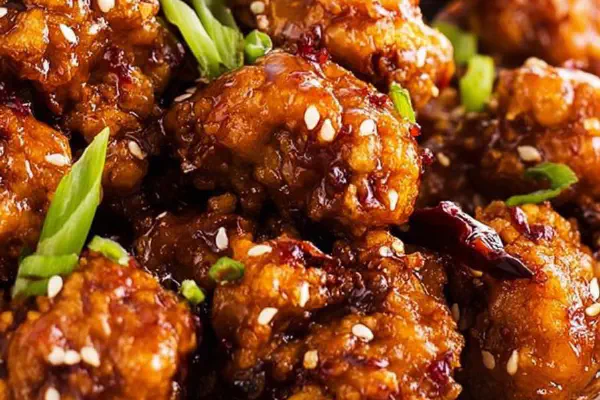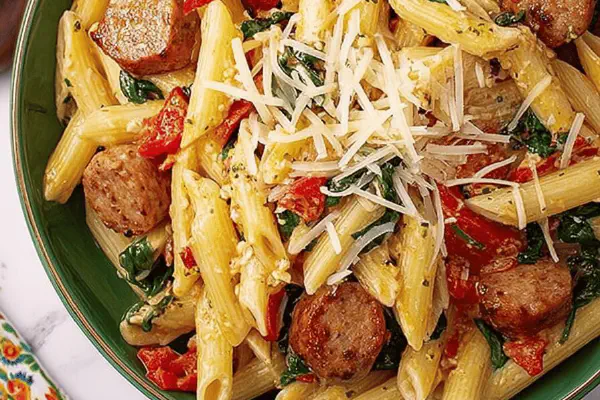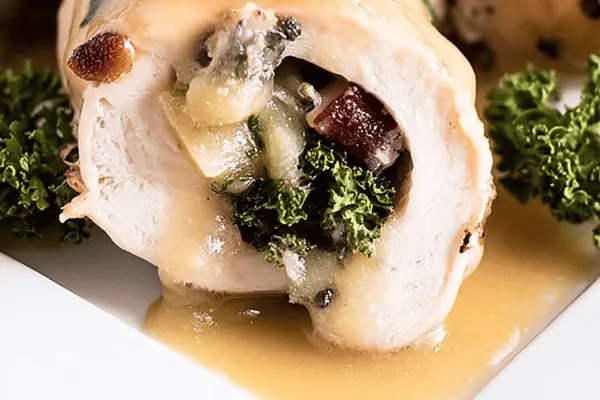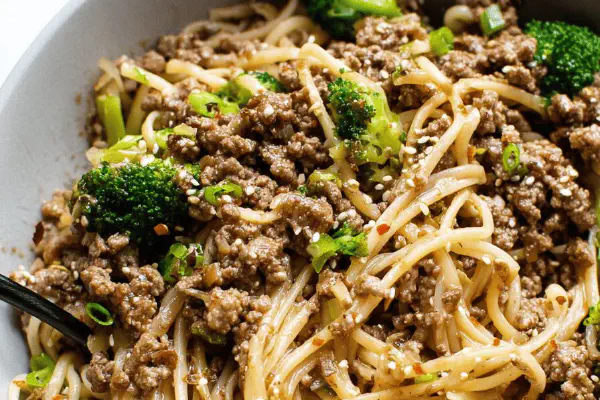Sesame Sheet Chicken Veggies
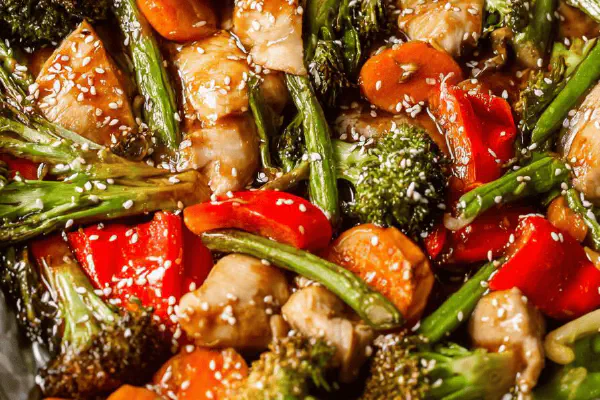
By Emma
Certified Culinary Professional
Ingredients
- 1.5 pounds boneless chicken thighs cut into bite-sized pieces
- 2 cups broccoli florets
- 1 cup sliced bell peppers (red and yellow mix)
- 1 cup sliced mushrooms
- 2 tablespoons low sodium soy sauce
- 1 tablespoon toasted sesame oil
- 1 tablespoon rice vinegar
- 2 teaspoons maple syrup (instead of honey for twist)
- 1 teaspoon cornstarch
- 1 teaspoon grated fresh ginger
- 2 garlic cloves minced
- 1 teaspoon toasted sesame seeds plus extra for garnish
- 2 sliced green onions for garnish
- Cooked rice for serving
About the ingredients
Method
Sauce
- Combine soy sauce, sesame oil, rice vinegar, maple syrup, grated ginger, and garlic in a small saucepan over medium. Mix cornstarch with a tablespoon cold water to slurry. Bring sauce mixture to a rolling boil then drop to a simmer.
- Slowly whisk in cornstarch slurry to sauce, stirring constantly. Watch carefully. Thickens quickly once boiling resumes; remove from heat once it coats back of a spoon lightly—too thick and it clumps on roasting.
- Set aside to cool slightly.
Roast preparation
- Preheat oven to around 410°F; hotter air speeds roasting and better crisp edges. Line a sheet pan with heavy duty foil, lightly sprayed or brushed with oil to prevent sticking and ease cleanup.
- Spread broccoli, peppers, and mushrooms evenly across pan. Place chicken pieces interspersed among veggies. Pour about 3 tablespoons (approx 0.2 cup) of sauce over everything; toss with spatula or hands just enough to coat.
- Avoid drowning vegetables in sauce or they steam rather than roast. Moisture kills crispness—key mistake I learned the hard way.
Roasting
- Slide pan into oven middle rack. Start smelling nutty sesame, garlic, and gentle ginger within 10 minutes. Watch broccoli tips darken and chicken edges turn golden with slight crust forming.
- Check tenderness of veggies by piercing with fork after 20 minutes. Chicken should feel firm but give slightly under touch, juices running clear if tested with knife.
- If veggies not browning enough, switch to broil for last 2–4 minutes but watch closely to prevent burning.
- Remove from oven once chicken cooked through and veggies have crispy browned edges yet tender centers.
Serving
- Plate with steamed rice base to soak up extra sauce. Add more sauce on side if desired but keep minimal so chicken and veggies retain texture.
- Top with sliced green onions and sprinkle toasted sesame seeds generously. Freshness from onions cuts richness; sesame seeds add crunch and earthy warmth.
- Eat immediately while hot; leftovers reheat okay but lose crisp edges, best fresh.
Cooking tips
Chef's notes
- 💡 Start sauce by blooming ginger and garlic in warm oil. Stir cornstarch slurry in with steady whisking to avoid lumps. Watch closely once boiling restarts—thickens fast, pull heat when coating spoon lightly; else sauce clumps and drowns veggies. Cool sauce a bit before using; thick but pourable. Avoid coating chicken heavily before roasting keeps edges crisp and meat juicy.
- 💡 Heat oven high—about 410 degrees. Dry roast works best. Use heavy duty foil sprayed lightly with oil to prevent sticking, cleanup easier. Spread veggies and chicken pieces well apart. Crowded pans trap steam; end up limp not crisp. Toss halfway if possible for even browning; mushrooms release water fast, chunk size affects timing and moisture level. Consider adding mushrooms late if worried about sogginess.
- 💡 Maple syrup stands in for honey; mild smoky sweetness deeper but without sticky overtone. Adds balance to soy and tangy rice vinegar. Adjust sweetness beneath soy’s saltiness. Low sodium soy recommended to avoid salt overload during caramelizing. Rice vinegar gives brightness but too much tips acidic side; measure carefully. Toasted sesame oil adds depth; light olive oil plus sesame seeds substitute if unavailable for nuanced nutty base.
- 💡 Visual and sensory cues more reliable than clock. Nutty aroma emerges around 10 minutes—sesame, garlic, ginger. Broccoli tips darken, edges crisp before center softens. Chicken edges turn golden, slight crust forms - signals good Maillard reaction. Fork test veggies for tenderness near 20 minutes; chicken yields slightly but feels firm, juices run clear on test with knife. Use broil last 2-4 minutes if needed but watch; fast burn risk.
- 💡 Sauce quantity control crucial. About 3 tablespoons drizzled then toss gently just enough for coating. Avoid puddles that steam veggies, kill crisp lines. Serve on rice base to soak up extra. Garnish last moment with sliced green onions and toasted sesame seeds for textural counterpoint. Onion brightness cuts through richness. Leftovers reheat doable but crisp edges soften; skip microwave or get soggy fast.
Common questions
Can chicken breasts be used instead?
Possible but thighs juicier, more forgiving with high heat. Breasts dry out fast unless careful. Adjust cook time down a bit. Watch texture closely. Might lose some of that depth.
What if sauce clumps during cooking?
Happens when slurry too thick or not whisked fast enough. Thin with splash water, reheat gently stirring aggressively. Pull off heat earlier next time. Prevent by adding slurry slowly, constant stirring key.
How to keep veggies from soggy?
Dry pan surface, don’t overcoat with sauce. Space veggies apart to let hot air circulate. Mushrooms release water—add late or in bigger pieces. Broccoli and peppers love dry high temp roasting, crisp edges signal right cooking.
How to store leftovers?
Cool quickly, keep in airtight container. Reheat oven or air fryer best to regain crispness. Microwave ruins texture fast. Can freeze but texture changes on thaw. Best within 2-3 days for flavor and bite.
